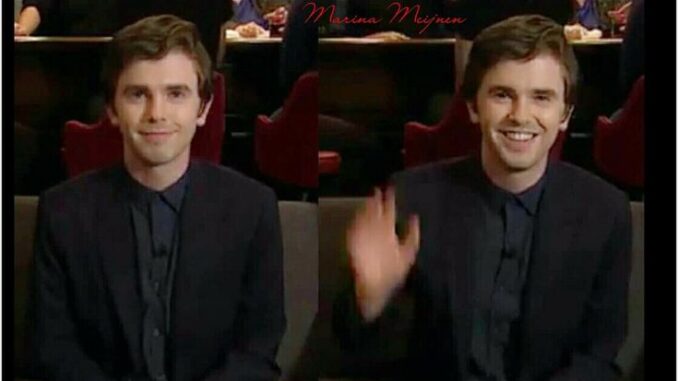
Long before Dr. Shaun Murphy walked the halls of San Jose St. Bonaventure Hospital, saving lives with his photographic memory and razor-sharp instincts, a similar story was unfolding — not in California, but in Seoul, South Korea. In 2013, a relatively modest Korean medical drama titled “Good Doctor” aired on KBS2. Starring Joo Won as Park Shi-on, an autistic savant who becomes a pediatric surgeon, the show earned steady ratings, warm praise, and a few domestic awards.
What no one could have predicted at the time was that this quiet little drama would spark a global phenomenon — and become the first Korean series to be successfully adapted into a major U.S. network show.
Welcome to the incredible journey of The Good Doctor, a tale of two continents, cultural bridges, and the universal power of human connection.
The Original Vision: Korea’s “Good Doctor”
The Korean version of Good Doctor was not flashy, loud, or riddled with romance — it was heartfelt, character-driven, and centered around a simple but powerful question: Can someone with autism function — and even thrive — in a high-stakes profession like medicine?
Joo Won’s portrayal of Park Shi-on was nuanced and emotional. As a pediatric surgeon struggling with social interactions but possessing genius-level medical insight, Park won over both his skeptical colleagues and viewers. The series aired for just 20 episodes, but it struck a chord with Korean audiences — especially for its respectful, hopeful depiction of autism.
The show also explored mentorship, found family, and the clash between hospital bureaucracy and medical passion — themes that would later carry over into the American adaptation.
A Leap Across Oceans: David Shore Joins the Mission
When Hollywood expressed interest in adapting the Korean series, it wasn’t exactly common practice. American networks had dabbled with foreign remakes before, but Korean dramas weren’t the usual go-to for inspiration. That changed when David Shore, the creator of House, signed on to develop the U.S. version.
Shore saw something timeless in the concept — a misunderstood genius, battling prejudice and personal trauma, using his talent to heal others. But he also recognized that to make it work in the American television landscape, it needed a complete reimagination.
Enter Dr. Shaun Murphy, played by Freddie Highmore, and a brand-new hospital setting: San Jose St. Bonaventure. While the premise remained intact — a young surgeon with autism and savant syndrome striving to prove himself — the show evolved with a broader cast of characters and emotionally charged story arcs tailored for Western audiences.
Freddie Highmore: The Game Changer
Casting Freddie Highmore was a stroke of genius. Known for his complex performances in Bates Motel and Finding Neverland, Highmore brought a delicate balance of vulnerability and precision to Shaun Murphy. His performance never veered into caricature. Instead, it was thoughtful, researched, and deeply human. Highmore wasn’t just an actor — he eventually became a writer and producer on the show, helping shape Shaun’s growth across seasons. His portrayal earned him a Golden Globe nomination and accolades from autism advocacy groups worldwide.
Going Global: Broadcast in Over 100 Countries
After premiering in 2017 on ABC, The Good Doctor was an immediate hit — drawing over 10 million viewers per episode in its first season and earning renewal after renewal. But perhaps more impressive was its global reach. The series was broadcast in over 100 countries, dubbed and subtitled into multiple languages. In Latin America, Europe, the Middle East, and Southeast Asia, fans fell in love with Shaun’s story. Online communities blossomed around fan art, character deep dives, and discussions of medical ethics. Interestingly, the success of the American version led many new fans to discover the Korean original, sparking renewed interest in K-dramas internationally.
Breaking Cultural Barriers with Humanity
So why did The Good Doctor succeed across such different cultures?
Because at its core, the story is about more than medicine. It’s about belonging. About the universal human desire to be seen, heard, and respected — regardless of how we speak, how we behave, or how our brains are wired. It shows that courage doesn’t always roar. Sometimes, it stammers. Sometimes, it avoids eye contact. Sometimes, it learns love one mistake at a time. In both versions — Korean and American — the protagonist isn’t trying to change who he is. He’s asking the world to make room for who he already is. And in doing so, the world listens.
Full Circle: The Show That Inspired a Movement
Years later, The Good Doctor inspired further adaptations in Japan and Turkey. Medical schools have cited episodes as conversation starters on ethics and empathy. Parents of autistic children have written heartfelt letters thanking the creators for giving their kids a hero to look up to. This isn’t just a TV show anymore. It’s a movement for inclusion, a bridge between cultures, and proof that sometimes, the most unexpected stories — like a small Korean drama — can change the global conversation.
Final Thoughts: A Tale Worth Telling Twice
Few shows can say they’ve succeeded in two languages, on two continents, with two completely different audiences. The Good Doctor is one of them. Whether you started with Park Shi-on in Seoul or Shaun Murphy in California, you were watching the same story unfold: the story of a doctor who didn’t quite fit in — and changed lives because of it.
